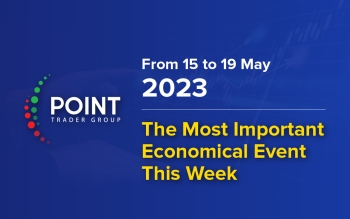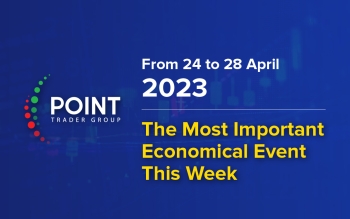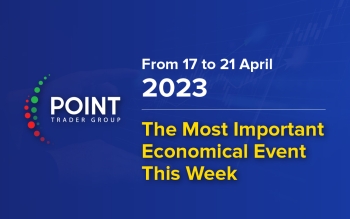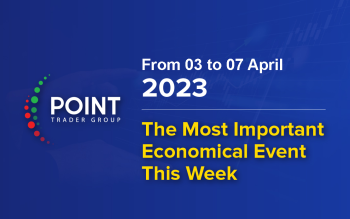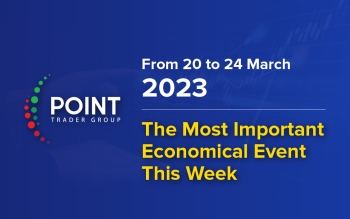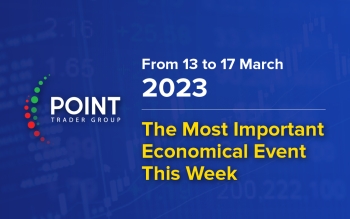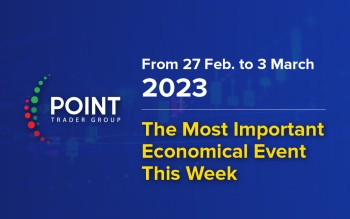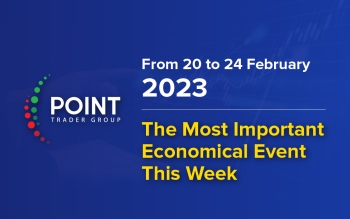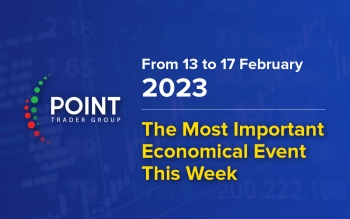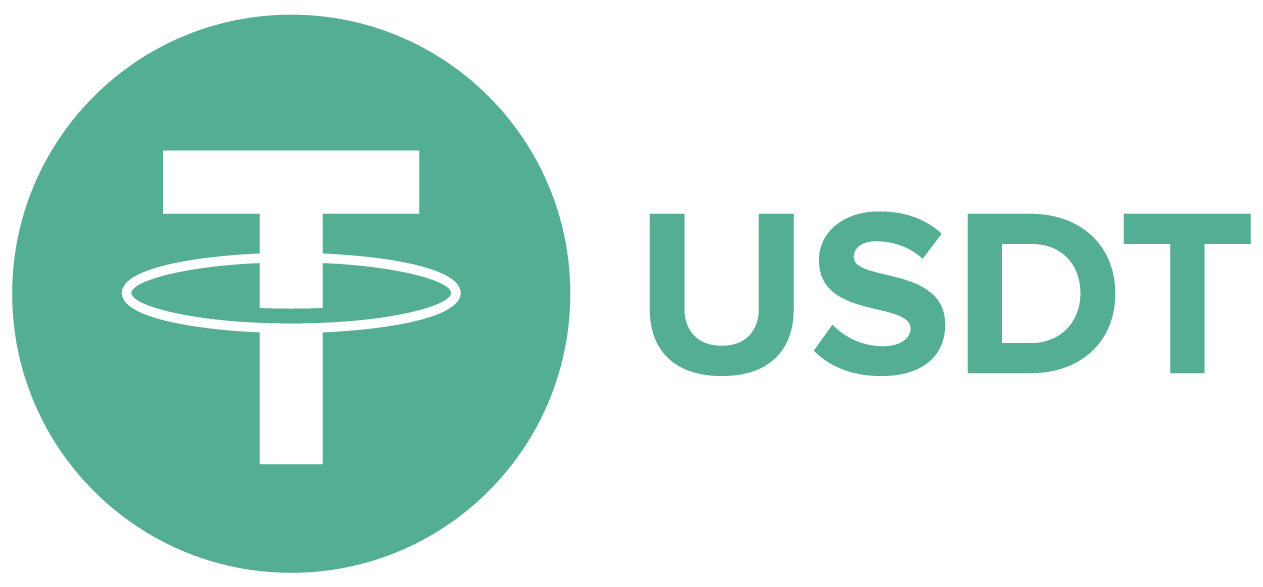The most important Economic events this week from the 6th to the 10th of December 2021
Market overview this week
United States of America
• Vaccinations, economic re-opening, and fiscal stimulus are boosting growth, but we expect a marked slowdown over 2022-2023.
• Democratic control in Washington means more fiscal stimulus, but partisanship and narrow majorities are likely to constrain politics.
• We expect the Fed to double the monthly tapering rate to $30 billion per month at the December FOMC meeting.
• We expect two hikes in 2022 (September and December) and three times in 2023 (March, June and December) with the start of the balance sheet run-off in September 2023.
• We expect the unemployment rate to drop to 4.5% by the end of 2021 and 3.5% by the end of 2023.
• Economic reopening and supply chain disruptions are likely to drive inflation higher in the near term, but we expect a slowdown in 2022.
• Noted risks include new SARS-CoV-2 variants, downside risks around fiscal policy and higher inflation expectations.
Europe
• We expect eurozone GDP to return to pre-pandemic levels in the fourth quarter of 2021, but the pace of recovery varies from country to country.
• Fundamental influences, policy and global base energy prices are set to keep European inflation above target in the coming months.
• We anticipate an increase in APP and APP envelope temporarily in December and release in April 2022.
• UK growth has begun to slow before GDP recovers to its peak, a process we expect to take into the first quarter of 2022.
• We have raised our inflation peak to 5%. However, we see inflation regressing towards the target in the middle of 2023.
• We changed the BoE request and now see a 15bp rate hike in December followed by a 25bp hike in February, May and the second half of 2022.
Japan
• We expect growth to accelerate as the pandemic subsides, but prolonged supply constraints could be a drag in the short term.
• The rise in international commodity prices will lead to a gradual rise in inflation, but to a lesser degree than it is in the major external economies.
• We do not expect a major change in economic or monetary policy, even under the Kishida administration.
• The risk is a renewed appreciation of the yen, caused by deepening tensions between the US and China and further moves to avoid risk in the markets.
Asia
• Growth in Asia is on a bumpy upward cycle and is likely to be broadened by exports and domestic demand.
• With more economies adopting the strategy of living with Covid-19 amid rising vaccination rates, consumption must catch up.
• Northeast Asia is benefiting from chip shortages amid the high-tech cycle, with better resilience to epidemics to support consumption.
• In Southeast Asia, cases have eased, but as the vaccination rate continues to fall, we remain cautious about the outlook, with the exception of Singapore.
• We expect Singapore and Taiwan to be the growth leaders in the region, while Thailand and the Philippines may lag.
• Inflation drivers from the supply side are likely to turn into demand, but are still broadly within the central bank's objectives.
• We expect central banks to remain patient, with the exception of Korea and India, where we expect interest rate hikes.
• Korea: As the pace of economic growth is likely to slow due to moderating export growth, we expect a final pickup in January.
• Australia: We expect strong momentum to reopen during Q4 and Q1, with inflation risks skewed sharply to the upside.
China
• Despite the easing of the energy shortage and fine-tuning of property restrictions, we believe the worst is yet to come for the economy.
• We see four negative shocks: the “zero Covid” strategy, cooling of real estate markets, slowing exports and Beijing's green measures.
• We expect the worst for growth in this downturn in the spring of 2022, when the pain threshold is also likely to be reached.
• We expect Beijing to intensify its monetary and financial support, while the "red lines" in the real estate market will be largely preserved.
The most important economic data expected this week
United State
We expect another strong month of core CPI inflation in November at 0.656% mom, keeping the FOMC on track for an accelerated decreasing announcement in December.
Trade Balance (Tuesday): We expect the trade deficit to narrow sharply to $67.0 billion in October from $80.9 billion previously, consistent with the sharp narrowing in the nominal goods trade deficit prior to rising exports. The rise in commodity exports in October is likely to be unsustainable. Congestion at US ports and strained logistics networks suggest that commodity trade data may remain choppy. On the one hand, aggregate exports may decline given the outlook for external demand. On the other hand, imports are likely to remain in good shape amid strong demand from the US and rebuilding stocks.
Q3 Nonfarm Productivity, Final (Tuesday): With only a modest revision in Q3 real GDP growth, up 0.1 percentage point to 2.1% qoq, the final estimate of nonfarm productivity growth may be relatively unchanged relative to the first estimate by 5.0% q/q decline. Growth picked up in hours during the third quarter as hiring accelerated, but real output growth was constrained by the auto sector. Productivity growth may remain relatively weak as the strong recovery in the labor market continues but growth is slowing.
JOLTS (Wednesday): Another drop in employment during October, after two consecutive declines during August and September, will be consistent with the continued improvement in the labor supply. The smoking cessation rate, closely linked to wage growth, also bears watch after hitting a high of 3.0% in October, now a full 0.7 points above pre-pandemic levels. Beyond October, the rise in COVID-19 cases and the Omicron variant risk slowing the improvement in labor supply as workers may become more cautious.
Jobless Claims (Thursday): Initial and continuing jobless claims indicate that the labor market remained strong in November. Incoming data may remain volatile during the holiday period. After November, the recent increase in the frequency of new COVID cases could affect leisure and hospitality employment.
CPI (Fri): Core CPI inflation rebounded in October; We expect the strong momentum to continue into November. Our forecast for core CPI inflation for November is 0.7% (0.566%), up from 0.6% (0.599%), which corresponds to 5.1% (5.086%) year-on-year, up from 4.6% (4.563%). Wholesale used car prices and industry data on used retail prices indicate another strong increase in CPI used vehicle prices; We're looking at a 5.2% monthly increase in November. Additional reductions in sales incentives for new vehicles during the month indicate that CPI new vehicle prices are also likely to continue to increase steadily. Among other volatile components, hotel industry data suggests that far-from-home prices did not rise in November but airline prices appear to have rebounded after four consecutive monthly declines during July and October. Given strong consumer demand, prices for non-vehicle durable goods are likely to continue rising at a brisk pace in November. Rental inflation and owner-equivalent rents have been rising recently, and we expect the strength to continue. Specifically, we expect a 0.40% monthly advance for both rent inflation and OER inflation in November. For non-essential components, overall energy prices should rise 3.6% per month, driven by higher gasoline prices, while food inflation is likely to moderate moderately to 0.5% per month from 0.9% previously, due to somewhat weaker meat prices. In all, our forecast for headline CPI inflation is 0.8% (0.846%) per month and 6.9% (6.909%) year-over-year. Our CPI NSA forecast is 278,207. We believe that core CPI inflation expectations are in line with our call for the Fed to announce an accelerated pace of decline at the December FOMC meeting.
Consumer Survey - University of Michigan (Fri): Consumer confidence in the University of Michigan consumer survey continues to falter on inflation concerns, helping to spur the Fed's hawkish communications axis. Attention in December is likely to remain on long-term (5-10 year) consumer inflation expectations, which have not yet risen consistently to levels that might cause concern for the FOMC. If longer-term inflation expectations increase more meaningfully, it risks accelerating the Fed's normalization schedule in the coming months.
US Budget (Fri): Data from the Treasury's daily statement indicates a budget deficit of about $200 billion in November.
Euro-zone
Possible decline in Sentix and ZEW surveys next week (especially forecast indicators). It's time for Germany, Italy and Spain, along with UK GDP and inflation expectations.
Sentix Eurozone Survey, December (Mon): This investor survey reported a rise in the balance of expectations but a further decline in current conditions in November. Of course, the slight rise in the balance of expectations would not have affected the Omicron strain nor some of the restrictions that were put in place in a number of countries later in the month. However, this month's survey will combine that conducted between December 2-4. Thus we expect a decrease in both components, but especially the expectations index.
Germany (Tuesday), Italy (Fri), Spain (Fri) Industrial Production, Oct: IP performance varied across the Eurozone, with Germany still 9% below peak (greater decline in auto production and increased exposure. Didn't help) in Against Italy and Spain fully / almost fully recovered (0.1% higher / 0.9% lower peaks respectively).
PMI production indicators for Italy and Spain held up better, but higher levels of production versus the peak suggest there is less chance of catching up than Germany, where production is sparse. Eurozone aggregate figures for October are due on December 14.
UK Retail Sales BRC, November (Tuesday): BRC, Barclaycard and official data were more positive on retail sales in October than in previous months with reports of early Christmas shopping, possibly based on concerns about possible commodity shortages due to global supply chain disruptions. . As we head into the Christmas period survey, official metrics for retail sales will take on even greater importance.
German ZEW Survey, December (Tuesday): This survey has a number of similarities to Sentix - it is usually conducted in the first week of the month and polls financial market analysts. Concerns about the virus are growing in Germany as case numbers rise, with tighter restrictions expected. We expect this survey to reflect this and see the balance of expectations - which rose in November - particularly vulnerable to decline.
France BdF Industrial Sentiment, (November) (Wednesday): The Bank of France sentiment survey held well in November (industry, services and construction sentiment all rose 2 points from October), but rising virus case numbers could put a dampening factor in the poll Dec. . However, with the largest spike in case numbers occurring only at the end of the month, the extent of any decline may be limited.
UK Monthly GDP, October (Fri): GDP grew 0.6% MoM in September with an average monthly growth rate of 0.5% now in the five months from May to September. Based on this metric (GVA, as opposed to spending-based quarterly GDP numbers) output was within 1% of its pre-virus peak at the end of the third quarter. We expect a more moderate rise in production in October (0.3% mom), although the rise in services PMI during the month presents an upside risk to production in this sector.
UK Inflation Expectations Survey (November) (Fri): With much focus on the potential second round effects of higher inflation, the outlook is currently under the spotlight. The survey could have been taken around mid-November, so the news that CPI inflation rose by more than a percentage point in October (published November 17) is unlikely to have been caught. The focus here will be on the long-term outlook (5 years), which rose from 2.7% to 3% in the August survey.
Key European policy makers' speeches and events this week:
• During the week: the German coalition government takes over
• Monday: BoE Deputy Governor Broadbent speaks
• Friday: UK debt rating by Fitch
Japan
We expect a small downward revision from -3.0% q/q in the first preliminary estimate of Q3 2021 real GDP to -3.4% in the second.
Second set of preliminary estimates of real GDP for the third quarter of 2021 (Wednesday):
The second preliminary GDP estimate will reflect the statistics for the company's financial statements by industry, released on December 1, as well as several key statistics released since the first set of preliminary GDP figures. Estimates were announced on 15 November. We believe the second set of GDP estimates for Q3 2021 will show a 3.4% q/q decline annually, down slightly from -3.0% in the first set of estimates (all figures adjusted for inflation unless otherwise noted).
We believe the second set of GDP estimates will show a 1.2% q/q drop in consumer spending (versus a 1.1% drop in the first set), reflecting a dip in consumer goods shipments after the release of confirmed industrial production data for September and lower. Health care spending is more than expected.
Household Income and Expenditure Survey for October, Real Household Consumer Expenditure (households with two or more members; Tuesday): We expect a 0.5% year-over-year decline in real household spending for October (households with two or more members).
However, on a monthly basis, we expect strong growth of 4.4%. More people came out to Japan in October as the fifth wave of COVID-19 infections came under control. With current conditions related to household activity, DI also improved in October's Economist Survey by 15.4 points per month to 56.3, we believe consumer spending recovered relatively sharply in October from September.
November Economic Watchers Survey: Current Conditions DI (Wed): We estimate that popular sentiment (current conditions DI) rose in November 2021 from October.
We noted the monthly improvement in the composite PMI (which correlates with sentiment in the Economic Watchers survey). Stock prices underwent a sharp correction in the November 25-30 survey due to fears of a spreading Omicron COVID variant, and while this may have dampened sentiment, the negative impact appears to have been limited as of the November survey.
China and Australia
We expect credit growth and CPI inflation in China to rise even as PPI inflation subsides, the Reserve Bank of Australia leaves interest rates unchanged and the RBI raises its reverse repo rate.
China: We expect credit growth - measured in terms of annual growth in total financing outstanding (AF) - to rebound modestly to 10.2% in November from 10.0% in October, supported by faster-than-normal bond issuance by government and corporates, as well as renminbi loans. The new policy was stronger than usual, as the People's Bank of China (PBoC) made major changes to its policy stance. In terms of level, which is usually affected by significant seasonal patterns, we expect new RMB loans to increase to CNY 1,700 billion in November from CNY 826 billion in October (up from CNY 1,430 billion recorded in November 2020), supported by faster issuance of real estate development loans and loans Green mortgage and loan. This will lead to a slight increase in the renminbi loan outstanding growth year-on-year to 12.0% in November from 11.9% in October. M2 growth is also likely to rise to 8.8% y/y in November from 8.7% in October. We expect the new additional financing to increase to CNY 2,800 billion in November from CNY 1.590 billion in October, well above the CNY 2,000 billion recorded in November 2020, supported by stronger bond financing from The usual by the government and businesses are new yuan loans. In terms of underlying effects, total financing outstanding (AF) growth declined to 13.6% y/y in November 2020 from 13.7% in October 2020.
We expect PPI inflation to decline significantly to 10.7% y/y in November from a multi-decade high of 13.5% in October, due to the widespread decline in raw material prices as a result of Beijing's aggressive interventions and lower demand. In terms of sequence, month-on-month PPI inflation is likely to decline sharply to -2.0% in November from 2.5% in October, which is well below 0.5% in November 2020. CPI inflation is likely to rise to 2.6% YoY in November from 1.5% in October, mainly supported by lower baseline and sequentially higher food price inflation (particularly pork). By sequential standards, we expect CPI inflation to ease to 0.5% mom in November from 0.7% in October, well above the -0.6% reading in November 2020. Pork price inflation is likely to rebound significantly both sequential and year-over-year. . Thanks to government purchases of pork for state reserves and strong seasonal demand through the end of the year.
We expect export growth over 1-2 years to moderate to 17.2% in November from 18.7% in October, primarily impacted by front load unwinding and whip impact amid indications of easing supply chain stresses. Our expectation is that year-over-year export growth will decline significantly to 14.0% in November from 27.1%, mainly due to unfavorable fundamental effects, as export growth last year jumped to 20.5% y/y in November from 10.9% in October . We expect YoY import growth in 1-2 years to ease slightly to 11.5% in November from 12.4% in October, mainly due to lower commodity price inflation and lower domestic demand. This means that year-over-year import growth is likely to fall to 19.0% in November from 20.6% in October. Combining our export and import growth forecasts, we expect China's trade surplus to shrink to $75.3 billion in November from $84.5 billion in October.
Australia: The Board of Directors of the Reserve Bank of Australia (RBA) will hold its last meeting of the year on Tuesday, 7 December. We expect the governor's press release after the meeting to contain some conflicting ideas, including: 1) local data was encouraging; and 2) the global recovery continues, but 3) new Covid-19 variables add uncertainty to the outlook. On the policy front, comments on the Reserve Bank of Australia's bond-buying program could be significant. The RBA previously indicated that it would continue to buy bonds at a pace of A$4 billion/week through mid-February, with a review at that time. However, with no meeting in January (per agreement), we believe it is possible that he will announce future options for his quantitative easing program next week. If so, we believe this is likely to tilt in a hawkish direction, given the rebound in domestic growth, lower bond market liquidity and the Fed signaling a faster pace of decline. The Reserve Bank of Australia surprised many with its decision to end its target yield policy in November, which sent heavy market volatility, and may feel the need to "over-communicate" this month.


 English
English



